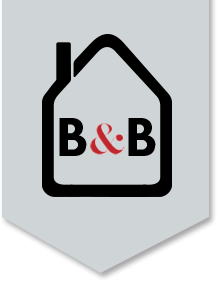Tiny Kitchen Design
How to make the most of your tiny kitchen design
How to make the most of your tiny kitchen design
Find what Tiny Countertop is right for you
What siding options do you have to choose from?
What are portable luxury restrooms and where are they going?
Learn how to Design your Tiny House!
What is Minimalism & what does it mean for you?
The Americans with Disabilities Act and its importance in design
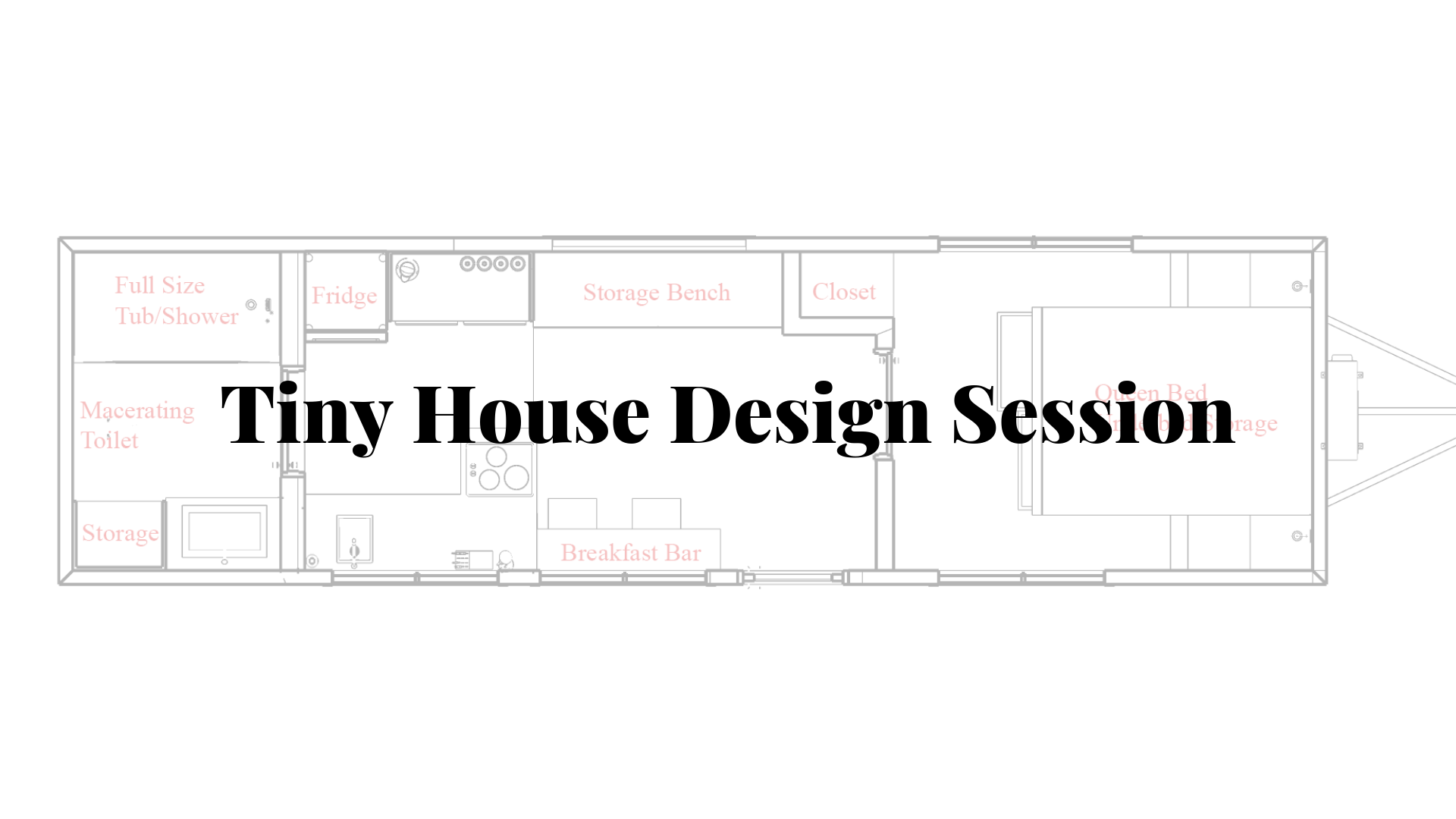
Our catalogue has a variety of tiny houses to choose from for all types of lifestyles. Look through the photos and descriptions and choose your favorite. You can ask us any preliminary questions about our designs. We build all of our tiny houses for four-season use anywhere in the United States. Once you’ve chosen your tiny house design, you’re ready for the next step.
We can’t start customizing your tiny house until we know where the house is going and how it will be used.
Before scheduling a design session, please send us a topographical map or aerial view of your property so we can make sure we’ll be able to deliver your tiny house and place it correctly. We’ll also need to determine what site work may need to be done before we can deliver your tiny house. We need to know what utilities (power, water, and waste water) your property has so we will be able to build your tiny house systems accordingly.
If you don’t have land yet, here’s what to look for when buying property for your tiny house. You’ll need pre-approval from your town to have a tiny house on your property (let them know whether it’ll be used as a primary residence or a guest house) before starting your design process with us. We want to make sure you won’t have any issues with the building inspector or zoning board of your town after you’ve sunk your time and money into the design!
Or, if you plan to travel with your tiny house like an RV, let us know and we’ll build it slightly differently than a tiny house that’s meant to stay in one place. We’ll also advise you on the truck capacity you’ll need to tow your tiny house.
The pricing listed on our website generally reflects what you see in the photos. The final price of your customized design can change, either up or down, according to what materials you have chosen. To prepare for your design sessions, look through our photos and videos of our tiny houses and check out the customization options for colors and building materials, which are listed in each category from the least expensive to most expensive.
When you’re ready to schedule your design session, contact us.
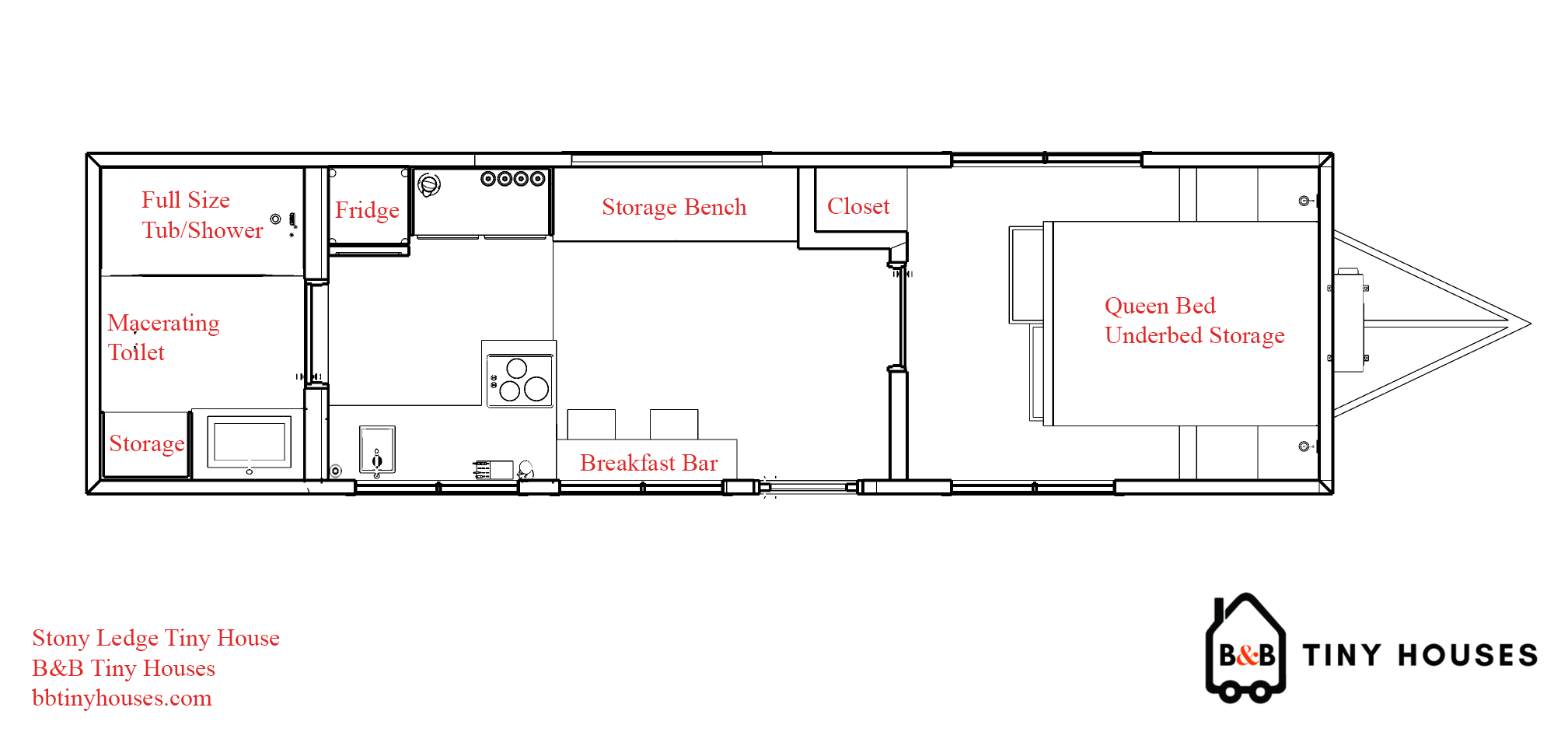
Pictured: Floor Plan of the 8.5′ x 30′ Stony Ledge Tiny House
We’ll start our design session by finding out how you plan to use your tiny house. Will you travel with it? Will it be used as a permanent residence, guest house or vacation home? Do you plan to host visitors? Do you love to cook? Is physical accessibility a priority? We’ll end up designing your house differently according to whether you need water tanks, whether you’ll move your house often, or whether you’ll use solar power, so we like to know up front what your plans are so we can design around them.
Next, we’ll go through all your choices for fixtures, materials, and colors.
After our design session, we’ll spend a week or two creating a quote for you.
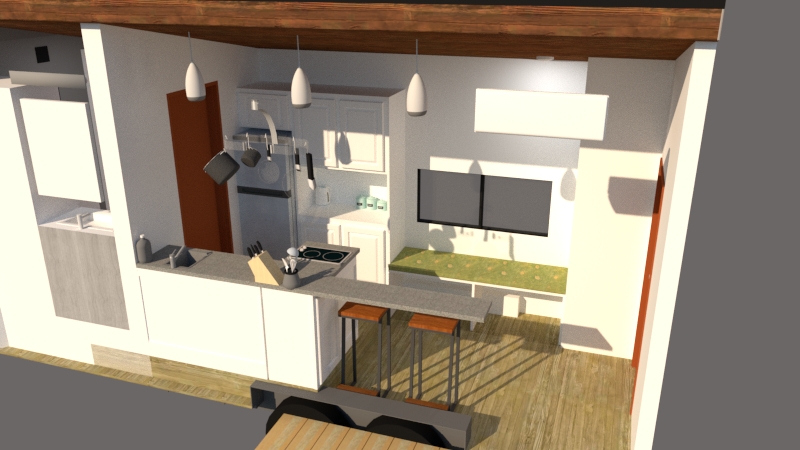
Pictured: Interior rendering of the Stony Ledge Tiny House.
We’ll have another short meeting to answer any questions you may have with your quote. If you’d like to alter it, we will go through the process with you until you’re happy with your quote.
When you’re ready to move forward with having your tiny house built, let us know we’ll send you a construction contract to sign. Once we’ve received your first payment (or, if you’re financing your build, when your financing comes through to us) we’ll be able to start ordering the materials for your house and building it. We’ll keep you updated about the status of your build and scheduling delivery, if needed.
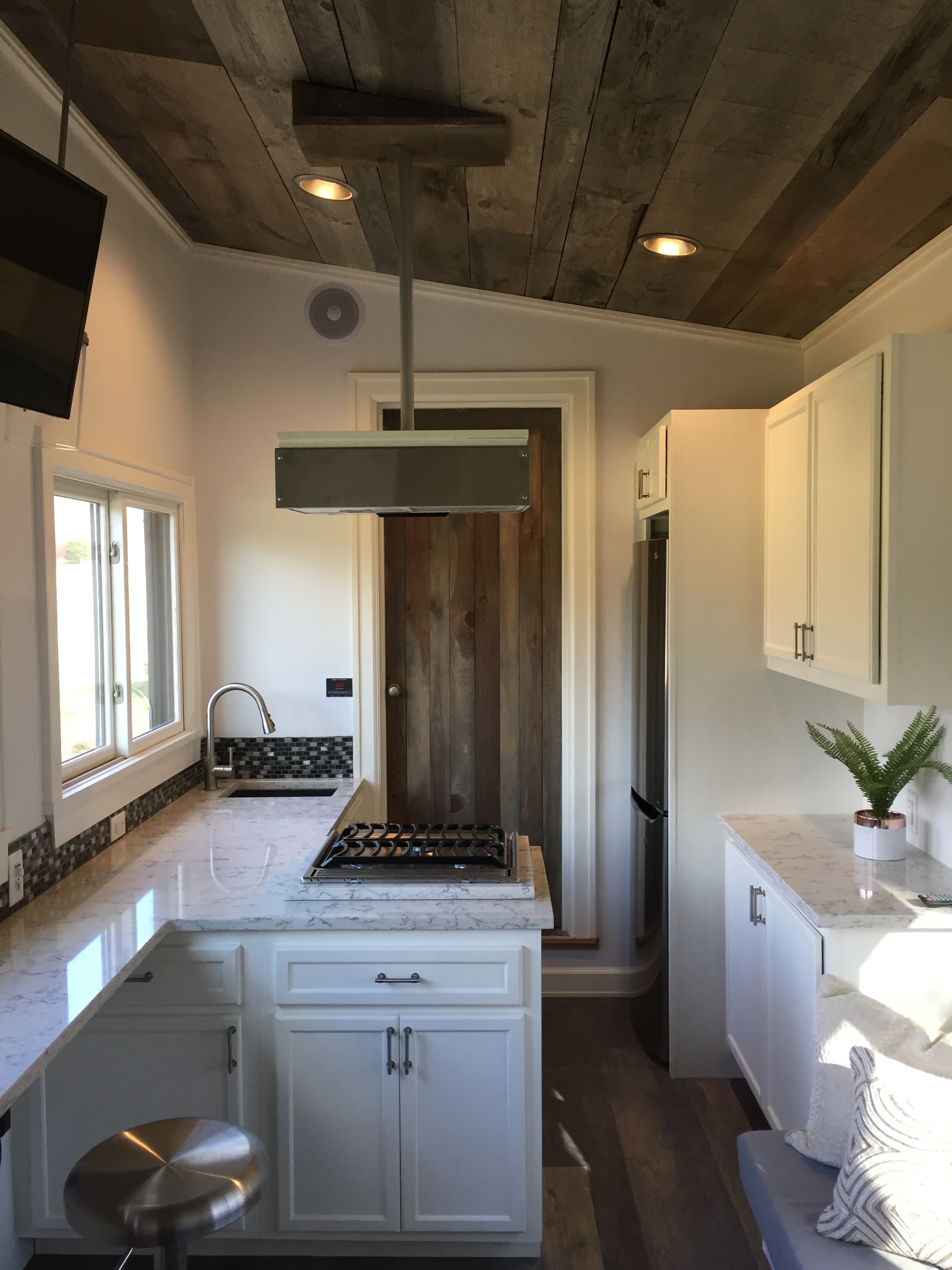
Image: Completed Kitchen in the Stony Ledge Tiny House.
I work in a tiny house. More specifically, a mobile office. Here at B&B, our company has grown faster than our factory has, so now a few of us share the 8 1/2′ x 20′ Brodie Mobile Office for 8 hours a day, 5 days a week. During that time, I’ve learned quite a few things about how to best design a small space for maximum working and living.
Here’s what I’ve learned:
 Windows and skylights make a huge difference.
Windows and skylights make a huge difference.Before moving out to the mobile office, I was working inside the factory in a little room we built into the corner of the warehouse. This room had windows to the factory but no windows to the outside. Now that I’m in the mobile office and my desk faces two windows, my quality of life has really improved. The old office, although it was bigger than the mobile office, felt a bit cave-like, and not in the way of grand echoing caverns; it was more like those tiny spaces spelunkers narrated by David Attenborough have to squeeze their bodies into. Anyhow, with its tall ceilings, skylights, and windows all around, the tiny mobile office, although smaller than the old office, feels way more spacious.
Both for air exchange and light, it’s nice to have windows on all sides of you. Opening a window at either side of the house creates a nice breeze. Because you’re surrounded by windows rather than looking at one or two walls with windows, the space feels more expansive and airy than a smaller space.
This goes for any house, not just tiny houses, but it’s something I’ve learned from this particular tiny house so I thought I’d share it here. I can’t stress this enough: choose a floor color that’s not going to show every single piece of dirt, dust, sand, mud, piece of grass, and microscopic pebble. This house was photographed on a day when the snow went up to our knees and we mopped the floor just before the shoot. If we hadn’t, you’d see all kinds of smudges on it.
The absolute best floor for mud-concealment is this grey one with lots of color variation. This house (the Arcadia Tiny House) has been exhibited on rainy, muddy days with hundreds of people (and double that number of boots!) walking through and you couldn’t even tell it was dirty.

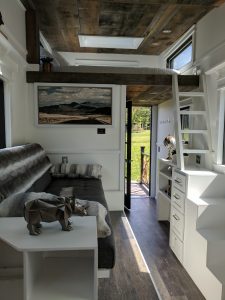
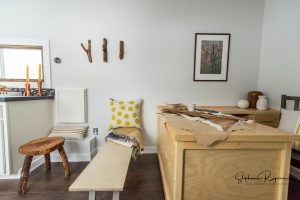 Mobile offices are great for greeting customers outside the work area.
Mobile offices are great for greeting customers outside the work area.Our workshop has six tiny houses being built at a time, with houses, trucks, deliveries, forklifts, et cetera rolling in and out of our factory doors all day. We don’t generally like to invite visitors inside this active work environment simply because it’s too much of a liability. Having the mobile office outside as the face of our company allows us to greet customers in a safe environment, free of sawdust, noise and hazards.
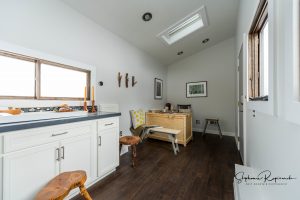 More people can fit in an 8 1/2′ x 20′ space than you think without feeling claustrophobic.
More people can fit in an 8 1/2′ x 20′ space than you think without feeling claustrophobic.We’ve had non-claustrophobic meetings with ten people inside. The level of claustrophobia definitely depends on the amount of stuff inside the house. Since this is an office, not a home, and most of our files are digital, not on paper, we really don’t need that much stuff inside the mobile office. We keep architectural samples, like color chips, siding swatches, and stain samples, but other than that pretty much everything’s digital.
Additionally, the objects that we do have are stored inside the cabinetry so they don’t add to visual clutter.
It’s quiet in the mobile office. Really quiet. It’s a side effect of being well-insulated. So during mealtimes it can be a bit… overwhelming for someone who doesn’t like to hear others chewing. My favorite white noise generator is Celestial White Noise on YouTube. Ten hours of a gentle hum that you tune out after a minute and don’t have to hear every time your coworker shifts in their chair.
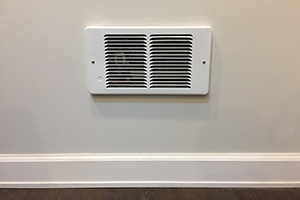
I have hot soup for lunch all the time in the winter. To make sure the mobile office doesn’t then smell like soup for the rest of the day, I always open the restroom door and turn the extractor fan on after eating a hot lunch. It only takes a couple minutes to return the air in the house to freshness.
Certain heating and cooling systems also include air exchange (ours doesn’t)– I’d recommend getting that if possible.
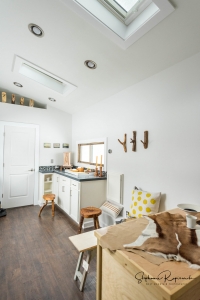 Tall ceilings and not too much clutter on the walls really make a space feel bigger.
Tall ceilings and not too much clutter on the walls really make a space feel bigger.Perhaps this goes without saying, but I think it’s worth mentioning the tall ceilings inside this tiny mobile office. In order to be road-legal, the tiny house has to be under 13 1/2′ tall so it can fit under bridges, trees and power lines. With the inside floor being just over 2′ off the road, there is still room for a taller-than-usual ceiling inside– and it makes a huge difference!
 According to mass.gov, for residential homes: “Title 5 (310 CMR 15.000) allows composting toilets for Remedial Use and also certifies them for General Use in new residential construction where a system in full compliance with Title 5 could otherwise be installed. The local approving authority (typically the Board of Health) must also approve installation of a composting toilet through a Disposal System Construction Permit and Certificate of Compliance. Check with your local Board of Health for its approval procedures.”
According to mass.gov, for residential homes: “Title 5 (310 CMR 15.000) allows composting toilets for Remedial Use and also certifies them for General Use in new residential construction where a system in full compliance with Title 5 could otherwise be installed. The local approving authority (typically the Board of Health) must also approve installation of a composting toilet through a Disposal System Construction Permit and Certificate of Compliance. Check with your local Board of Health for its approval procedures.”
Read all the details here:
Source: https://www.mass.gov/files/documents/2016/08/qm/comptoi.pdf
Note that this doesn’t apply to tiny houses on wheels– only homes that are permanently affixed.
In summary, Title 5 allows for conforming composting toilets and a greywater system in new residential construction where there could otherwise be a septic system. However, this doesn’t mean it’s allowed in every town. The local Board of Health will also have to approve it.
Here’s how to get in touch with your local Board of Health in Massachusetts.
B&B offers five different toilets for tiny houses on wheels: the best solution for you depends on where you’re parking your tiny house, whether it’ll move, what utilities are available and how often you’ll use your tiny house. Check out this blog post on the 5 Types Of Tiny House Toilets.
Learn more about our process or fill out the form below and one of our tiny house experts will reach out to you.
